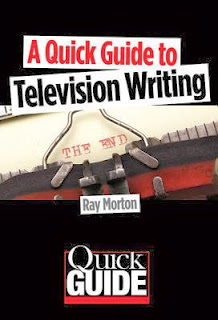A Quick Guide to Television Writing by Ray Morton
Release Date: November 19, 2013
Publisher: Limelight Editions (Imprint of Hal Leonard)
ISBN: 978-0879108052
Source: Received from Publisher
Add it to Goodreads
A Quick Guide to Television Writing is the ultimate reference manual to the art, craft, and business of writing for the small screen. In a series of brief but comprehensive segments, the book covers the entire process of creating a professional television script from conceiving the initial idea to polishing the final draft. Covered topics include: the three main types of teleplays; an overview of dramatic storytelling; adapting a dramatic story to the specific demands of television storytelling; the techniques of television storytelling; teleplay style and formatting; how to create a television series; important T.V. writing “dos” and “don’ts:” the business of television writing, including an overview of the many jobs and positions available to T.V. writers; and how to bring your work to the attention of the industry. Written in smart, reader-friendly prose, the book is chock full of the vital information, helpful tips, and keen advice that will help you make your teleplay the best it can be.
If you want a drive by lesson on television writing, this is the book for you! This book is definitely for the newbie to television writing, as once you know all of these basics, you know them. No need for a refresher. So if you’ve already done your research and are on your way to television writing, chances are you know everything in this book. If this doesn’t describe you however, be sure to order this book and open it up as soon as it arrives.
A Quick Guide to Television Writing contains twelve chapters that range from the components of dramatic storytelling (including a breakdown of premise, plot, characters, world building, etc…) to The WGA with steps to writing a teleplay, a breakdown of writing credits, a lesson on script format and length, and an explanation of jobs for television writers in between. These are the basics. That said, it wasn’t until chapter four that information I wasn’t clear about before started trickling in. I even highlighted a few lines as the chapters went on. So here’s Television Writing 101 for all of you aspiring writers out there. I’d highly recommend this so pick up a copy of this book when you are ready to get a jump start on your writing career. You won’t be disappointed!
A Quick Guide to Television Writing by Ray Morton is available today.
